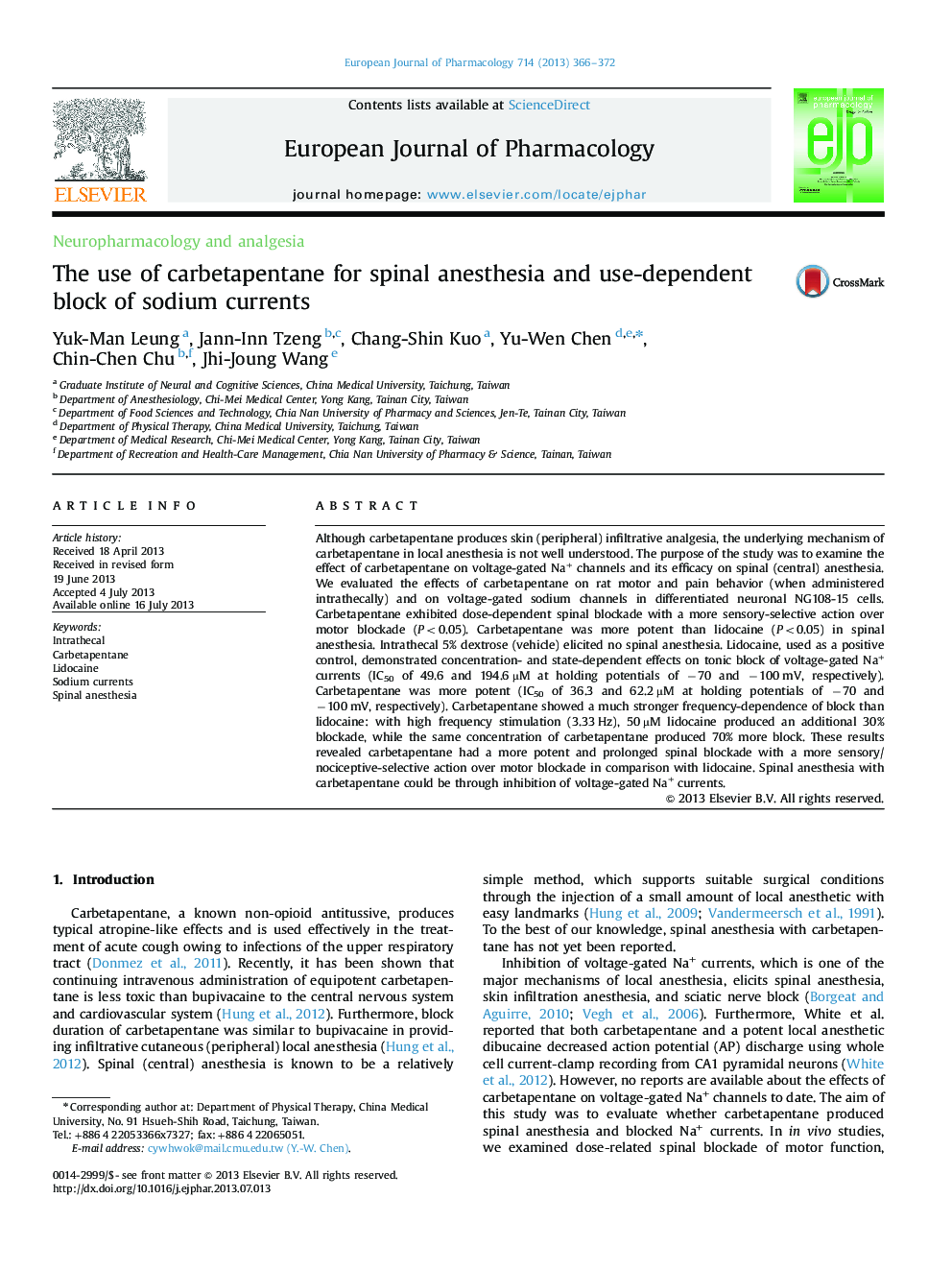| Article ID | Journal | Published Year | Pages | File Type |
|---|---|---|---|---|
| 5828555 | European Journal of Pharmacology | 2013 | 7 Pages |
Although carbetapentane produces skin (peripheral) infiltrative analgesia, the underlying mechanism of carbetapentane in local anesthesia is not well understood. The purpose of the study was to examine the effect of carbetapentane on voltage-gated Na+ channels and its efficacy on spinal (central) anesthesia. We evaluated the effects of carbetapentane on rat motor and pain behavior (when administered intrathecally) and on voltage-gated sodium channels in differentiated neuronal NG108-15 cells. Carbetapentane exhibited dose-dependent spinal blockade with a more sensory-selective action over motor blockade (P<0.05). Carbetapentane was more potent than lidocaine (P<0.05) in spinal anesthesia. Intrathecal 5% dextrose (vehicle) elicited no spinal anesthesia. Lidocaine, used as a positive control, demonstrated concentration- and state-dependent effects on tonic block of voltage-gated Na+ currents (IC50 of 49.6 and 194.6 µM at holding potentials of â70 and â100 mV, respectively). Carbetapentane was more potent (IC50 of 36.3 and 62.2 µM at holding potentials of â70 and â100 mV, respectively). Carbetapentane showed a much stronger frequency-dependence of block than lidocaine: with high frequency stimulation (3.33 Hz), 50 µM lidocaine produced an additional 30% blockade, while the same concentration of carbetapentane produced 70% more block. These results revealed carbetapentane had a more potent and prolonged spinal blockade with a more sensory/nociceptive-selective action over motor blockade in comparison with lidocaine. Spinal anesthesia with carbetapentane could be through inhibition of voltage-gated Na+ currents.
